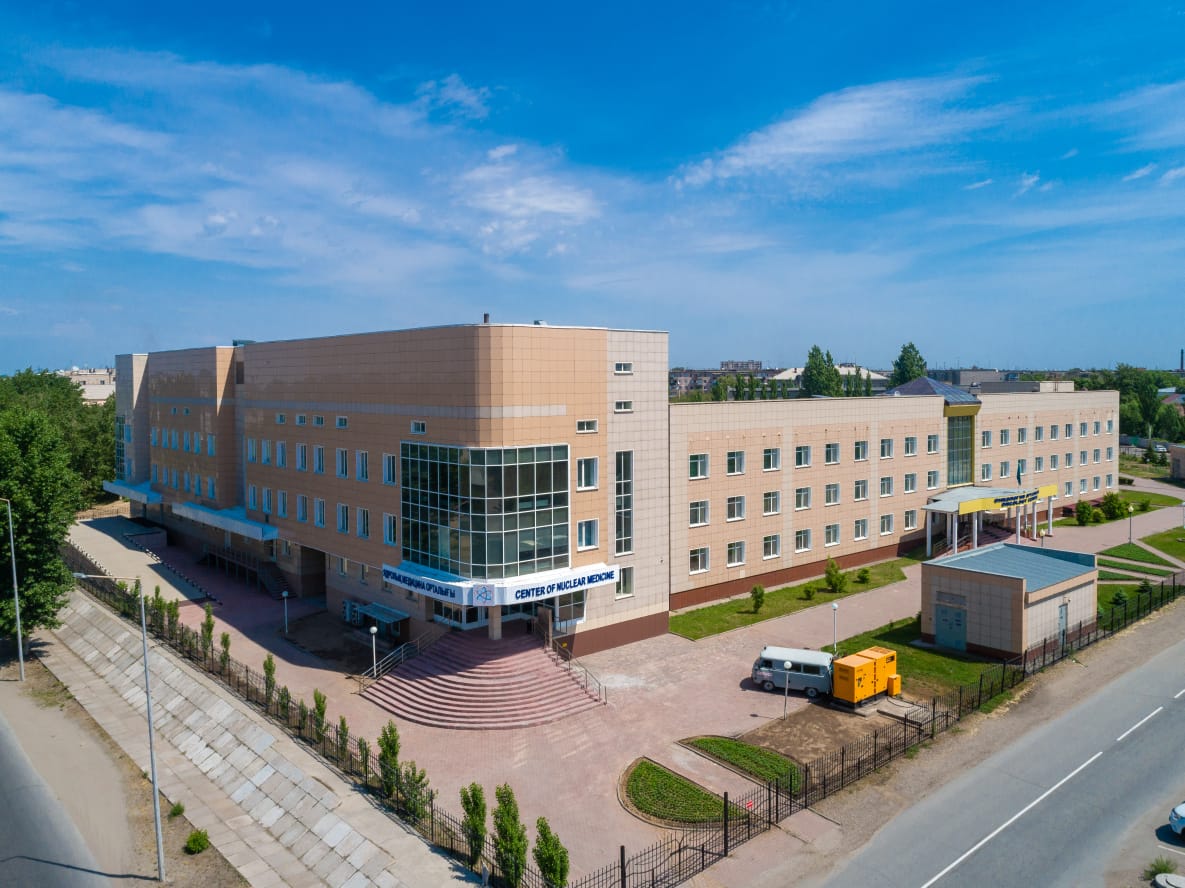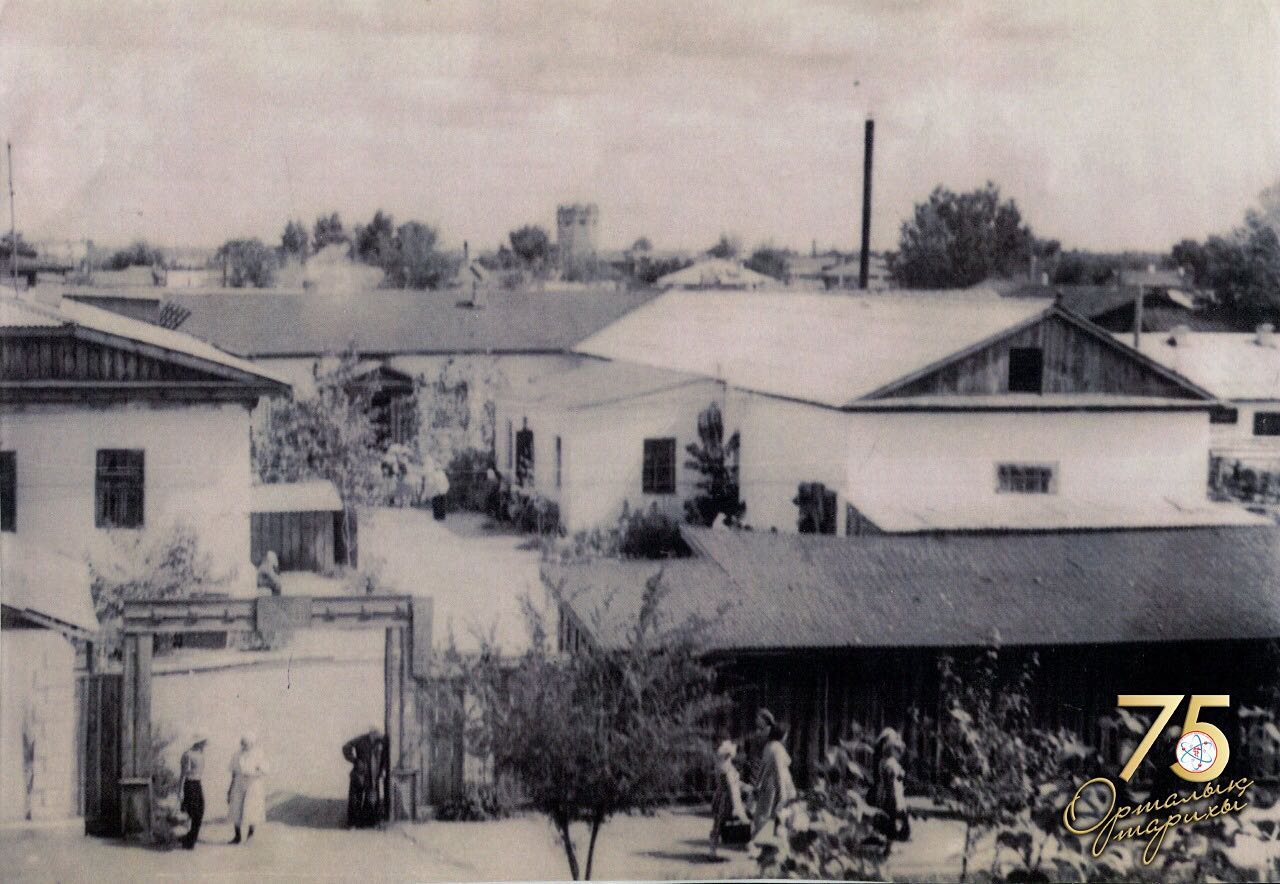
The history of the Center for Nuclear Medicine and Oncology, which dates back 75 years, dates back to October 1947, with the creation of a small Oncology Center in Semipalatinsk . At that time, the staff included only 1 doctor, 1 reception nurse and 1 patronage nurse. In the post-war years, as for other areas of society, the period of formation of the oncology service turned out to be difficult. Thanks to the high organizational and human qualities of the first leaders, such as Erika Rudolfovna Belskaya, the oncology service strengthened and expanded step by step.
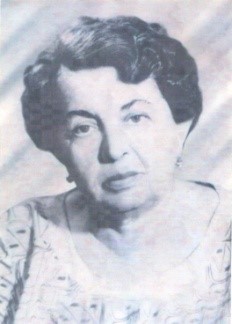
It was the Honored Doctor of the Kazakh SSR, an excellent student of healthcare, a doctor of the highest qualification category, Erika Rudolfovna Belskaya, who became the founder of oncological care in the Semipalatinsk region. Under her leadership, the regional dispensary became a large medical institution providing specialized medical care to cancer patients in cities and villages. Medical examination of cancer patients, systematic visits of oncologists to the regions, as well as communication with medical institutions of the city have been established. Medical examinations for the population and door-to-door preventive examinations have been introduced. Oncology centers appeared in the regions, it became possible to conduct a number of laboratory tests, such as rectoscopy, cystoscopy, biopsy, and it was no longer necessary to send patients to Alma-Ata for this.
In 1952, work began on organizing an oncology clinic that served patients throughout the Semipalatinsk region. For this purpose, 20 beds were allocated from the free fund of the regional health department. Ivan Kuzmich Sedov was appointed chief physician of the oncology dispensary . With the development of the region’s oncology service, new directions and advanced methods of diagnosing and treating cancer are being introduced: its own pathology laboratory is being opened, cobalt therapy has been introduced .

The 60s of the last century became an important stage in the development of oncology services. It was during this period that the oncology clinic was able to significantly strengthen its material and technical base. After the reconstruction of the hospital and the construction of the clinic, it was not only possible to expand the bed capacity, but also a modern operating room, a dressing room, and the necessary auxiliary diagnostic rooms equipped with the latest equipment for that time. Cytological and radioisotope laboratories are opening. In 1963, for the first time in Kazakhstan, chemotherapy was used to treat cancer at an oncology clinic. At that time, 4 chemotherapy drugs were used, such as dopanone, endoxan, cyclophosphanone and thioteph .
By 1970, the oncology clinic was already using all modern treatment methods available at that time, but radiation therapy occupied a dominant place. The number of patients receiving chemotherapy and hormone therapy is growing. In addition, in 1970, the oncology clinic became a school of excellence in Kazakhstan for the prevention and provision of cancer care to patients. “Open Day” and comprehensive visits of oncologists to the regions are being introduced .
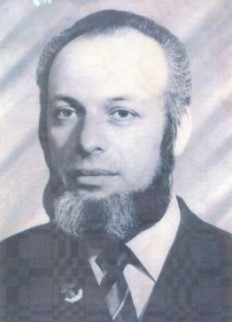
The course of progressive development was continued by Excellence in Health Care, doctor of the highest category Albert Aleksandrovich Kolker, who headed the dispensary in 1973. With his active participation, a three-story standard building was built, as well as a two-story extension to the radiology building. The new building houses dispensary, surgical and gynecological departments, as well as diagnostic services, including an X-ray department, a clinical laboratory, a centralized cytology laboratory and an organizational and methodological office.
Great contribution of A.A. Kolker also contributed to the development of surgical and radiation treatment of cancer patients. He passed on his wealth of professional experience to young, currently working doctors. In those same years, for the purpose of early detection of breast cancer, the first ever screening examinations of the mammary glands began to be carried out in women in 7 districts of the region and in Semipalatinsk. By the end of the seventies, the oncology clinic was already using such unique techniques as treatment using remote gamma therapy devices, application and interstitial curitherapy, and manipulations with the use of liquid radioactive substances.
In the 80s, the development of the dispensary buildings continued – major repairs were carried out and construction of an extension to the radiology building began. During these years, radiological equipment was significantly updated, making it possible to carry out radiation therapy under conditions of radiation safety for personnel.
The landmark events of the decade also include the opening of the Department of Oncology at the Semipalatinsk Medical Institute – this became an important contribution not only to the training of oncologists, but also to the development of science in oncology.
Also during these years, the clinical diagnostic laboratory introduced original methods for determining individual radiosensitivity in patients with stomach cancer. Methods for determining cholesterol and b -lipoproteins have been mastered and put into practice.
In the 90s, the Semipalatinsk Regional Oncology Center was renamed the Interregional Oncology Center of Semipalatinsk. In those years Gabdulmanap Abeevich Abeev became the chief physician of the oncology center. With his direct participation, the Semipalatinsk-Houston (Texas, USA) partnership was launched in 1995, thanks to this the material and technical base of the dispensary was strengthened – autoclaves, beds, surgical instruments, dressings, medicines and much more were received. Over the course of 3 years, 6 specialists trained in the USA, and 10 in the CIS countries. In the intensive care unit, a model post was installed, a pharmacy department was organized, control and quality of laboratory tests were improved, and a teaching and methodological office was opened. An international cancer registration program has been introduced. In order to prevent leukopenia during radiation therapy, laser therapy has been introduced.
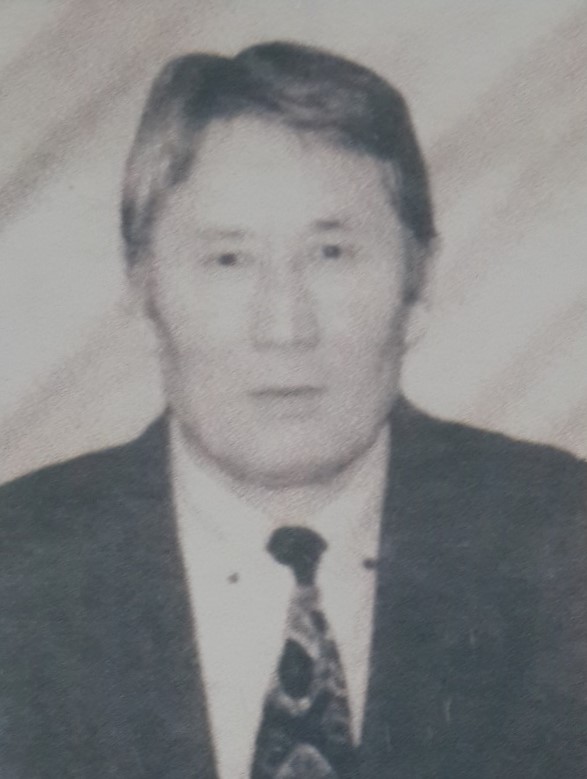
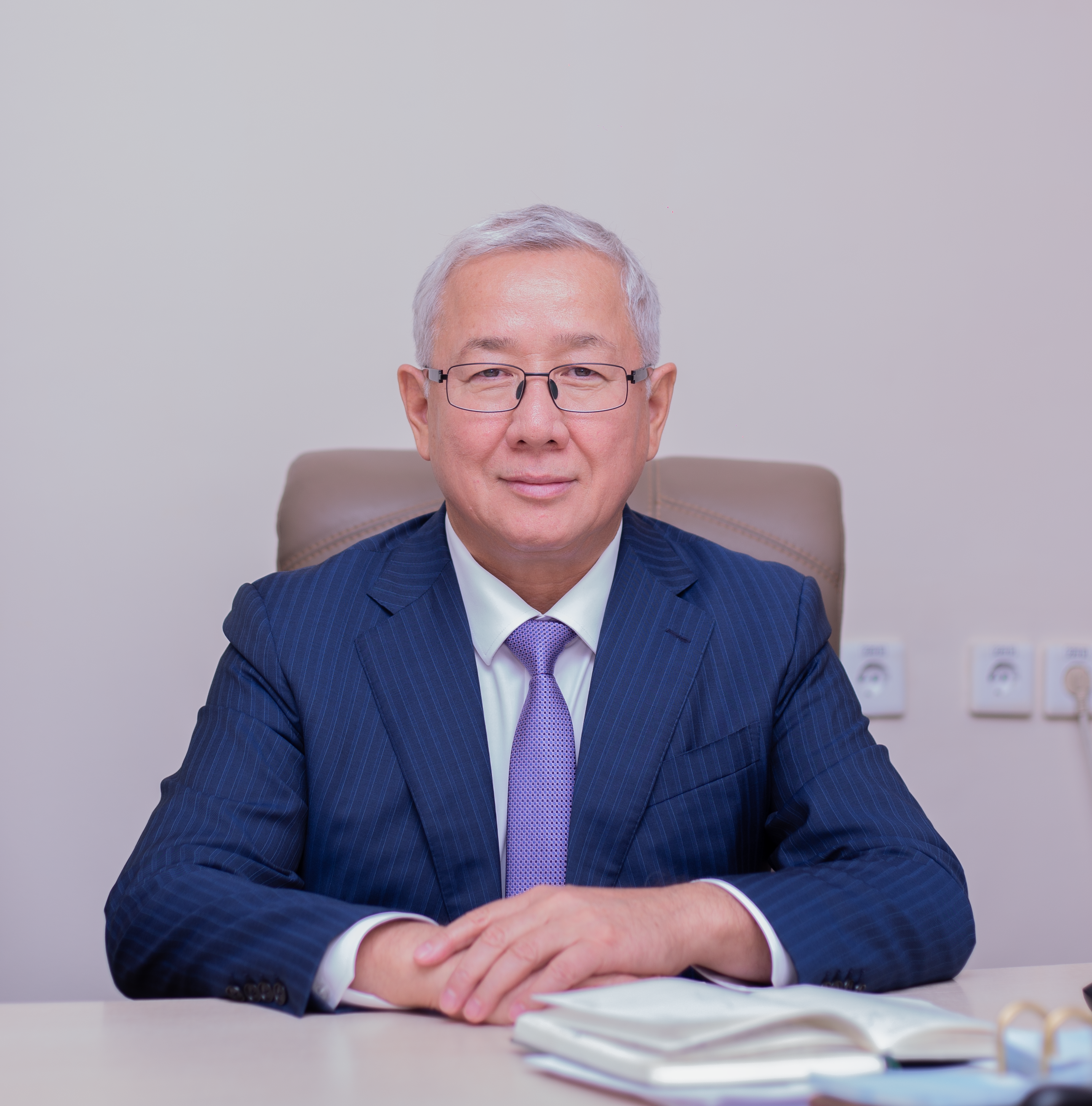
In 1998, the oncology center was headed by Marat Nurlanbekovich Sandybaev, Doctor of Medical Sciences, Professor, Associate Professor of the Department of Oncology of SSMU, doctor of the highest qualification category, scientist, public figure, talented health care organizer.
Under his leadership, various programs are being implemented in the field of protecting the health of the population of the region, in particular to improve the fight against cancer. On his initiative, a project was implemented to create a mammology center at the dispensary, and a department of mammology and oncogynecology was opened, where specialized medical care is provided to women suffering from malignant diseases of the reproductive organs. A new clinic, a chemotherapy department are functioning, a day hospital department, and a regional Specialized Consultative and Diagnostic Department have been created. To bring cancer care closer to the districts, a mobile team of doctors has been created who, according to the approved schedule, travel to the districts, conduct on-site master classes, consult patients, provide organizational and methodological assistance, and conduct demonstration operations.
By the beginning of the 2000s, as well as the entire decade, it became a new milestone in strengthening the material and technical equipment and expanding the capabilities of the oncology center. For example, through the Ministry of Health of the Republic of Kazakhstan, equipment for a clinical diagnostic laboratory was received: hemocytometers “Sismex”, “Medicon 4000”, a biochemical analyzer, a gas analyzer, an electrolyte analyzer, a urine analyzer and much more were put into operation, which made it possible to increase the range of studies carried out in the laboratory. A new device for orthovoltage was purchased X-ray therapy. The Terasix X-ray simulator for pre-radiation preparation was put into operation.
The dispensary department was put into operation. In June 2004, funding began for the construction of a modern radiology center. A hospital with 85 beds was built – 3527,3 m2, an extension to the radiology building – two canyons for linear accelerators – 359,3 m2. As part of the Road Map, renovations were carried out in a three-story standard building.
The diagnostic and treatment process of the dispensary has also expanded and been updated with modern diagnostic and treatment methods. The pathohistological laboratory has introduced an immunohistochemical research method for breast cancer.
In the 2000s, under the leadership of Marat Sandybaev, the dispensary took a confident course towards expanding international cooperation. Thus, within the framework of the IAEA project, internships and training of dispensary employees in the CIS countries and abroad were financed. A Memorandum “On international scientific exchange between the Department of Molecular Pathology, the Scientific Research Institute studying diseases resulting from atomic testing, the Graduate School of Biomedical Sciences at Nagasaki University in Japan and the State Enterprise OOD of Semipalatinsk” was signed. As part of the signed Memorandum, a project was created with JICA to conduct screening and cytological studies of the female population of the Semipalatinsk region, which was exposed to ionizing radiation as a result of previously conducted tests in this territory. The pathomorphology laboratory has fully mastered the new equipment received through humanitarian aid from the Government of Japan. In order to exchange experience and improve their skills, Japanese morphologists worked in the oncology clinic for over 4 months. A bilateral Memorandum “On international cooperation, scientific and practical exchange between the Altai branch of the State Institution of the Russian Cancer Research Center named after N.N. Blokhin of the Russian Academy of Medical Sciences, the Altai Regional Oncology Center of the Russian Federation and the Regional Oncology Center of Semipalatinsk East Kazakhstan Region of the Republic of Kazakhstan” was signed.
Most importantly, thanks to cooperation with foreign colleagues, it was in the first decade of the two thousand that the foundations were laid for the creation of a modern nuclear Center in the region, which in the future will open a completely new chapter in the history of the formation and development of oncology services not only in the region, but also in Kazakhstan as a whole. It was during these years that the second joint project with the IAEA and the AEC of the Republic of Kazakhstan was signed and is being implemented – KAZ/6/009 “Creation of a nuclear medicine department in the East Kazakhstan Oncology Center”, which received financial support within the IAEA TC for the 2009-2013 cycle. As part of this project, the IAEA purchased a small gamma camera for the study of the thyroid gland and additional equipment. Training of specialists for nuclear medicine and expert visits within the framework of this program continue. The first President of Kazakhstan Nursultan Nazarbayev, representatives of scientific centers, governments of near and far abroad countries, including the USA, Korea, Japan, and European countries visited repeatedly.
In the new decade – 2010-2020, under the leadership of Marat Sanbybaev, the dispensary, without changing its traditions, continued its confident path of progressive development. Among the important transformations and achievements, one can note the introduction of new CT and MRI devices and a mobile mammography station. It was during these years that almost all departments of the dispensary were equipped with new devices for the diagnosis and treatment of cancer patients. A multidisciplinary approach to diagnosis and treatment has been introduced. The first examinations of the thyroid gland began on the Nucline TH-33 gamma camera using the drug Tc 99 (Technetium). Construction of the second stage has been completed, a hospital with 85 beds has been put into operation. Construction underway III queues – nuclear medicine departments. And many of the dispensary’s specialists have been trained in leading scientific and clinical centers in the near and far abroad.
The beginning of the 20s of the new millennium was finally marked by the successful completion of long and painstaking work to create the Center for Nuclear Medicine. The crowning achievement of the work of many scientists, doctors, political and public figures, but most importantly, the director of the Center for Nuclear Medicine and Oncology, Marat Sandybaev, is the opening of the first and only radionuclide therapy department in Kazakhstan at the moment, as well as a radionuclide diagnostics department (2 PET CT and 2 SPECT) with the launch of the cyclotron. It should be noted that the Center has mastered the full cycle of nuclear medicine, from production, packaging and quality control of pharmaceuticals, to carrying out diagnostic and treatment work.
In 2022, Marat Sandybaev, after many years of fruitful work, resigned as director of the Center for Nuclear Medicine and Oncology, but in order to direct his knowledge and experience to an even more important matter – to create and head the health department in the young, newly formed region of Abay. He was replaced as director of the Center by candidate of medical sciences Tatyana Ivanovna Belikhina.
In 2023, under the leadership of T.I. Belikhina a new diagnostic technology has been successfully introduced into the treatment process: Scintigraphy of sentinel lymph nodes using a gamma probe with technetium. The Center also launched the production of a new, already second radiopharmaceutical NaF (we became the 3rd Center in the country), which made it possible to introduce a new study – PET CT with 18-F-Na F to detect metastatic lesions of bone tissue, for the differential diagnosis of bone pathology. In the Abay region, a high-dose chemotherapy technique has been introduced for long-term chemotherapy of patients with malignant neoplasms of soft tissues, bones, and the lymphatic system. A new mobile team has opened (consisting of a doctor, nurse, psychologist) for severe cancer patients with home visits; previously services were provided by Hospice. For the first time in the region, 2 types of minimally invasive surgeries were introduced for malignant neoplasms of the stomach and lung, which reduced hospital stays and accelerated rehabilitation processes.
Summarizing almost 75 years of development of the Center for Nuclear Medicine and Oncology, we can say that it has passed a difficult, but glorious path from a small oncology center to the largest Center in Kazakhstan, where all modern world practices in the diagnosis and treatment of oncological diseases are applied.
